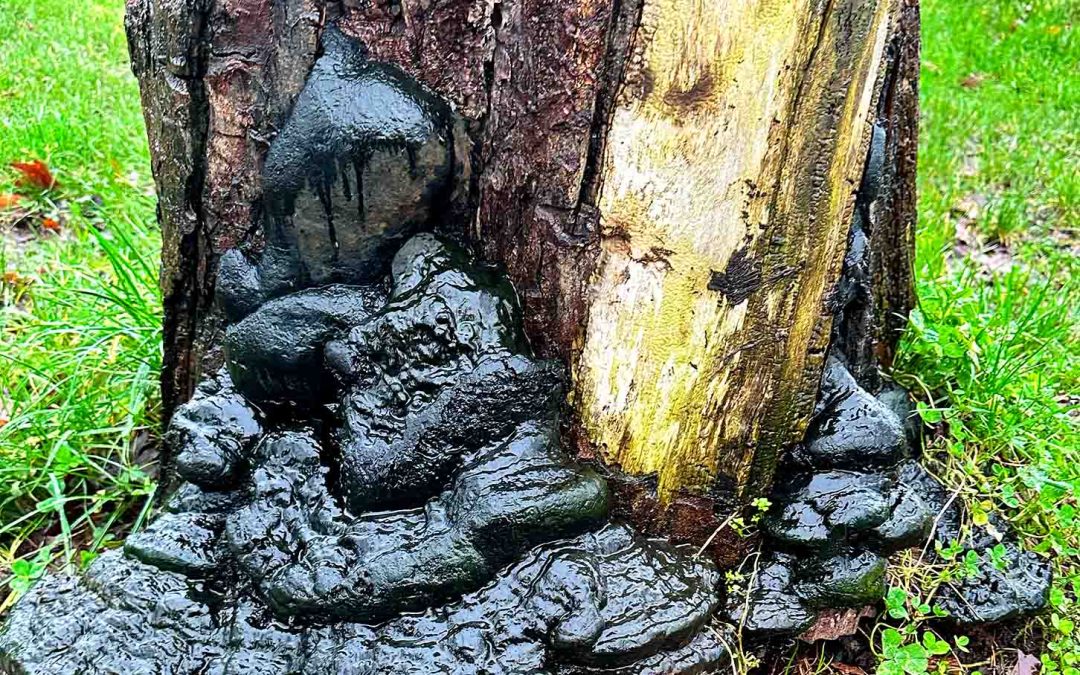Ganoderma’s Impact on Wood Structure
Ganoderma’s primary modus operandi involves initiating a process known as white rot, systematically breaking down the lignin and cellulose that constitute the wood’s structural framework. The fungus affects different types of tree differently and there are many types of Ganoderma. As these fungi types establishes within the wood, they can begin to decay the wood, resulting in some cases weakened wood and compromised tree stability, which can make the tree susceptible to breakage, uprooting, and overall diminished stability. It should be noted however, that this can be a very slow process and trees with Ganoderma can retained good levels of stability for a very long time and may never become structural compromised.
A Glimpse of Harmony: Ganoderma’s Role in Nutrient Recycling
Amidst the potential stability issues Ganoderma can have on tree trees, there exists an intriguing ecological twist. In cases where the fungus colonises hollowed stems or decaying wood, it becomes a partner in nutrient recycling. As Ganoderma breaks down the wood, it releases nutrients locked within, transforming the decaying matter into a nutrient-rich substrate.
This nutrient recycling process, facilitated by Ganoderma’s white rot decay, contributes to the replenishment of the forest floor and can even be re-used by the very tree it is decaying. The released nutrients become available for uptake by nearby vegetation, fostering a cycle of growth and decay that sustains the vitality of the ecosystem.
Navigating the Balance: Coexistence and Conservation
The contrasting roles of Ganoderma in both destabilising trees and aiding nutrient recycling underscore the complex interplay within forest ecosystems. Striking a balance between managing the potential threats posed by Ganoderma to tree stability and recognizing its contribution to nutrient cycling is crucial for effective conservation and sustainable forestry practices.
As we continue to unravel the mysteries of Ganoderma’s influence on trees, it becomes evident that this fungal player is not solely an adversary but also a contributor to the intricate dance of life within our forests. By understanding and respecting the delicate balance, we can strive for coexistence and conservation, ensuring the resilience and longevity of our woodland ecosystems.
If you need help with identifying Ganoderma, get in touch with contact Lally Tree Management, today.

